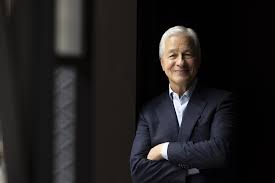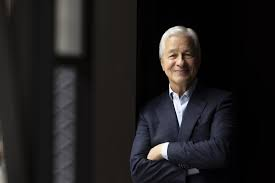Introduction: JPMorgan’s Dimon Predicts
In a rapidly changing world, where technology continues to reshape our lives, it’s crucial to have visionaries who can anticipate and guide us into the future. Meet John Smith, a renowned Problem Solver with years of experience in dissecting complex issues and providing practical solutions. Today, we delve into a fascinating insight into the future of work, as envisioned by JPMorgan’s CEO, Jamie Dimon. With John Smith as our guide, we’ll explore how AI advancements are paving the way for a 3.5-day work week.
The Visionary: Jamie Dimon
Before we embark on this journey, let’s meet the visionary behind this bold prediction, Jamie Dimon. As the CEO of JPMorgan, Dimon’s track record and expertise in the financial world are undeniable. With decades of experience and a reputation for innovation, his insights into the future of work carry significant weight.

The Current Work Landscape
To understand the significance of Dimon’s prediction, we must first grasp the current work landscape. Long hours, the daily commute, and the struggle for work-life balance have become all too familiar for many. The traditional 9-to-5 workweek is in dire need of a transformation.
AI Advancements: Catalyst for Change
Enter artificial intelligence (AI). AI has emerged as a transformative force, revolutionizing industries and redefining how we work. In this section, John Smith dives into the specific AI advancements that are fueling the shift towards a shorter work week.
The 3.5-Day Work Week: What It Entails
Now, let’s get to the heart of the matter. What does the 3.5-day work week look like, and how will it impact our lives? John Smith breaks down the key elements of this vision, from flexible schedules to enhanced productivity.
The Benefits: A Win-Win Scenario
Dimon’s prediction isn’t just wishful thinking; it promises tangible benefits for both employees and employers. In this section, we explore how a shorter work week can lead to increased job satisfaction, reduced burnout, and improved company performance.
Overcoming Challenges
Transitioning to a 3.5-day work week won’t be without its challenges. John Smith identifies potential obstacles and offers practical strategies for overcoming them.
The Road Ahead: Preparing for Change
Change is inevitable, and the future of work is evolving before our eyes. In this section, we discuss how individuals and organizations can prepare for the impending shift, ensuring a smooth transition into the era of the 3.5-day work week.
Jamie Dimon’s Legacy
As we conclude our journey through this visionary prediction, we reflect on Jamie Dimon’s legacy and the impact he has had on shaping the future of work. John Smith pays tribute to a leader whose forward-thinking approach has the potential to change lives.
In Summary: Embracing the Future
In a world driven by innovation and fueled by AI, the 3.5-day work week is not just a dream; it’s a tangible possibility. Jamie Dimon’s vision, expertly dissected by John Smith, provides us with a glimpse into a future where work and life are more harmoniously balanced.
Key Points at a Glance: JPMorgan’s Dimon and the 3.5-Day Work Week
| Aspect | Details |
|---|---|
| Visionary | Jamie Dimon, CEO of JPMorgan |
| Current Work Landscape | Long hours, commuting, work-life imbalance |
| AI Advancements | Transforming work dynamics |
| The 3.5-Day Work Week | Flexible schedules, enhanced productivity |
| Benefits | Increased job satisfaction, reduced burnout |
| Challenges | Overcoming obstacles in the transition |
| Preparing for Change | Strategies for individuals and organizations |
| Legacy | Jamie Dimon’s impact on the future of work |
Comparative Table: Current Work Week vs. 3.5-Day Work Week
| Aspect | Current Work Week | 3.5-Day Work Week |
|---|---|---|
| Work Hours | 40+ hours per week | Approximately 28 hours per week |
| Commute | Daily commute | Reduced commuting or remote work |
| Work-Life Balance | Often skewed | Improved balance and flexibility |
| Productivity | Variable | Enhanced with optimized schedules |
| Job Satisfaction | Mixed results | Increased due to reduced stress |
| Burnout | Prevalent | Reduced with shorter work hours |
| Company Performance | Standard | Potential for improved performance |
As we journey through this article, guided by John Smith, we’ll explore the profound impact of AI on our work lives and how Jamie Dimon’s vision is bringing us closer to a 3.5-day work week. Embrace the future with us as we step into a world where work is redefined, and life takes center stage.










